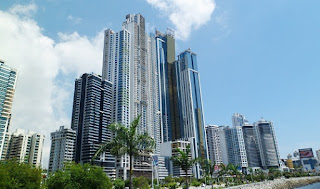Analysis: National IT Strengths and Weaknesses
The IT landscape of Panamá has undergone several important changes in the past five years. Although many significant advances have been made, improvements are still needed in many areas.
Strengths
1. Well Developed Telecommunications Infrastructure:
as a result of privatization in 1997, and de-regulation in 2003 the
market has changed dramatically. Although there is still a single local service
provider, Cable and Wireless, individuals can now choose from different service
offerings for their national long distance, and international calling needs.
Cable and Wireless has made significant investments in the telecommunications
infrastructure since it entered the market in 1997.
2. Increased
Government Involvement in ICT Sectors: this year, the government
started the introduction of a set of initiatives that intend to improve the ICT
landscape of Panamá. The Panamanian government has developed a comprehensive
plan, e-panama.gob.pa, that incorporates information and telecommunications
technology, focuses on social and economic development, and seeks to increase
participation of the population in issues of national importance. The e-panama
plan includes e-government, e-education, e-economy, e-health, and e-democracy.
This will provide lasting benefits regarding education, infrastructure, and
investment incentives.
3. Low Cost of Labor: the cost of
labor is much less than in developed countries such as the United States. For
example, the monthly salary for a worker in a call center is between $500-600
per month.
4. Incentives for ICT Investments in the Country:
the government will soon be formally establishing the Panamá-Pacific
Special Economic Area that will provide tax incentives and benefits for ITC
companies. Also, special laws have been passed, such as the one regarding call
centers, in order to provide incentives for international companies to set up
their call centers in Panamá.
5. FDI: FDI figures have
increased dramatically in 2003, after experiencing a significant decrease for
2002.
Weaknesses
1. Lack of Trained Workforce: the
workforce in Panamá is not trained in ITC specific areas. Also, the lack of
individuals that have an advanced command of the English language is a weakness,
since the government is trying to attract international companies in the ICT
sector, such as call centers and help desks. The government is currently
training about 3,000 individuals in advanced English in a time period of three
months. This may continue in the future, especially as more companies establish
themselves in the Panamá-Pacific Special Economic Area for ICT sector
companies.
2. Low Computer and Internet Penetration Rates:
Computing and Internet Diffusion are very low, especially when comparing them to
countries like Costa Rica. Low computer and internet penetration rates may grow
significantly after the e-panama.gob.pa initiatives are
implemented.
3. No Domestic Production of Software and
Hardware: currently, there is no significant domestic production of
software or hardware in Panamá.
4. Legal Environment: there
is a general perception of widespread corruption in the country. The legal
system is not lacking in laws that protect the business community (such as
copyrights and intellectual property), however the judicial system is slow and
bureaucratic. Changes in this area are of vital importance if the country wants
to be more appealing to international companies seeking to enter a Latin
American market.
Source: Cecilia Stoute, INITEB site http://www1.american.edu/academic.depts/ksb/mogit/country.html








